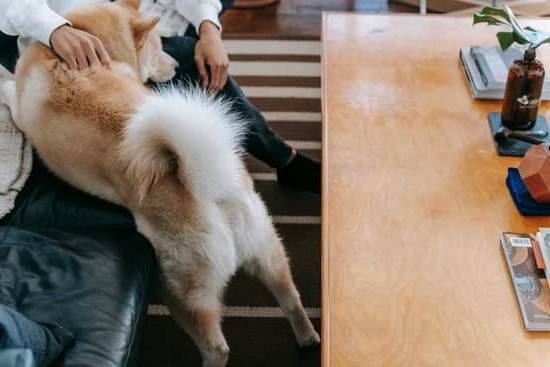The Samoyed breed is known for its friendly and sociable nature, making them popular as family pets. However, like any dog, they require proper training to ensure they are well-behaved and obedient companions. In this article, we will discuss how to train your Samoyed dog to be the best version of themselves.
Samoyeds are intelligent and independent dogs with a strong desire to please their owners. Understanding their unique characteristics and traits is crucial when it comes to training them effectively. From their fluffy white coat to their playful demeanor, Samoyeds have specific needs that must be addressed through appropriate training methods.
Training your Samoyed dog not only helps in shaping their behavior but also strengthens the bond between you and your pet. In this guide, we will explore the importance of training your Samoyed, creating a positive training environment, basic commands every Samoyed should learn, advanced training techniques, addressing common behavioral issues, socialization tips, and more. By following these training tips with consistency and patience, you can enjoy a well-behaved and happy Samoyed companion for years to come.
The Importance of Training Your Samoyed Dog
Samoyed dogs are known for their friendly and gentle temperament, making them excellent family pets. However, proper training is crucial to ensure that your Samoyed behaves well in various situations. Training your Samoyed not only helps you establish a good relationship with your pet but also prevents behavioral issues that may arise without proper guidance.
One of the most important aspects of training your Samoyed is to establish yourself as the pack leader. Samoyeds are intelligent dogs but can also be independent and stubborn, so it’s essential to show them that you are the one in charge. Setting boundaries and being consistent with rules will help your Samoyed understand what is expected of them. Positive reinforcement techniques such as using treats, praise, and playtime can be effective in motivating your Samoyed to follow commands.
When starting training with your Samoyed, it’s important to focus on basic commands such as sit, stay, come, and leash manners. Building a strong foundation with these commands will make it easier to move on to more advanced training techniques later on.
Consistency is key when teaching new behaviors, so make sure to practice regularly and have patience during the learning process. With dedication and the right approach, you can successfully train your Samoyed dog to be well-behaved and obedient companion.
| Samoyed Training Tip | Benefits |
|---|---|
| Establish yourself as the pack leader | Helps in setting boundaries and maintaining control |
| Focus on basic commands first | Builds a strong foundation for more advanced training |
| Use positive reinforcement techniques | Motivates your Samoyed to follow commands effectively |
Creating a Positive Training Environment
Establish a Routine
One way to create a positive training environment for your Samoyed is by establishing a consistent routine. Dogs thrive on routine and structure, so try to train your Samoyed at the same time each day. This will help them know what to expect and make them more receptive to learning new commands.
Use Positive Reinforcement
Positive reinforcement is key when it comes to training your Samoyed. This means rewarding good behavior with treats, praise, or toys. When your Samoyed successfully learns a new command or behaves well, make sure to reward them immediately. This will help reinforce the behavior and motivate them to continue learning.
Stay Patient and Calm
Training a Samoyed requires patience and consistency. It’s important to stay calm and avoid getting frustrated during training sessions. Remember that every dog learns at their own pace, so be patient with your Samoyed as they go through the training process. With time and consistent positive reinforcement, your Samoyed will eventually learn how to follow commands effectively.
Basic Commands Every Samoyed Should Learn
Samoyed dogs are intelligent and eager to please, making them great candidates for learning basic commands. Training your Samoyed in these fundamental commands not only helps establish a strong bond between you and your furry companion but also ensures their safety and well-being. Here are some essential commands that every Samoyed should learn:
- Sit: Teaching your Samoyed to sit is one of the first commands you should work on. This command is useful for various situations, such as mealtime, greeting visitors, or putting on a leash.
- Stay: The stay command is crucial for keeping your Samoyed safe in potentially dangerous situations or when you need them to remain in one place for an extended period.
- Come: Having a reliable recall command is essential for off-leash activities and ensuring your Samoyed returns to you promptly when called.
In addition to these basic commands, it’s important to practice consistency and patience during training sessions. Rewarding good behavior with treats or praise can motivate your Samoyed to learn and perform the desired commands effectively. Remember, positive reinforcement is key when teaching your furry friend how to train your Samoyed dog.
Training Tips for Basic Commands
- Keep training sessions short and engaging to prevent boredom or frustration.
- Use high-value treats as rewards to keep your Samoyed motivated during training.
- Praise and pet your dog when they successfully follow a command to reinforce positive behavior.
By focusing on teaching basic commands with positive reinforcement techniques, you can set a solid foundation for more advanced training with your Samoyed. Consistency, patience, and practice are vital components of successful training sessions with your beloved Samoyed companion.
Advanced Training Techniques for Samoyeds
When it comes to training your Samoyed dog, it is important to not only focus on basic commands but also incorporate advanced training techniques to keep them mentally stimulated and engaged. Here are some advanced training techniques that you can use to challenge your Samoyed and strengthen your bond:
- Agility Training: Agility training is a great way to improve your Samoyed’s coordination, endurance, and overall physical fitness. Setting up an agility course in your backyard or enrolling in classes can provide mental stimulation and help build a stronger relationship with your furry friend.
- Scent Work: Samoyeds have a strong sense of smell, making scent work a perfect advanced training technique for them. You can start by hiding treats around the house or yard and encouraging your Samoyed to use their nose to find them. This can be a fun and rewarding activity for both you and your dog.
- Trick Training: Teaching your Samoyed new tricks not only keeps them mentally active but also strengthens the bond between you both. From teaching them how to spin in circles to playing dead, trick training can be a fun way to challenge your furry companion.
By incorporating these advanced training techniques into your routine, you can help keep your Samoyed physically and mentally healthy while also having fun together.
Remember, consistency and patience are key when implementing these advanced techniques. With dedication and positive reinforcement, you’ll be amazed at how quickly your Samoyed picks up new skills and behaviors. Enjoy the journey of training your beloved Samoyed dog.
Addressing Common Behavioral Issues in Samoyed Dogs
Samoyed dogs are known for their friendly and gentle temperament, but like any breed, they can exhibit certain behavioral issues that may need to be addressed through training. One common issue that Samoyed owners may face is excessive barking. Samoyeds are naturally vocal dogs and may bark to communicate or express themselves.
To address this behavior, it is important to teach your Samoyed the “quiet” command and reward them when they stop barking on command. Consistent training and positive reinforcement can help reduce excessive barking in Samoyeds.
Another common behavioral issue in Samoyeds is their tendency to dig. Digging is a natural behavior for dogs, but it can become problematic if your Samoyed is digging up your yard or garden. To prevent excessive digging, provide your Samoyed with an appropriate outlet for their digging instincts, such as a designated digging area filled with sand or dirt. Redirecting this behavior towards a specific location can help curb unwanted digging behavior.
Separation anxiety is another common issue among Samoyeds, as they are known for their loyalty and attachment to their owners. Training your Samoyed to be comfortable being alone for short periods of time can help alleviate separation anxiety. Start by leaving your Samoyed alone for short intervals and gradually increasing the time spent apart.
Providing toys or treats that keep them engaged while you’re away can also help distract them from feelings of loneliness. By addressing these common behavioral issues through training and positive reinforcement, you can ensure a happy and well-behaved Samoyed companion.
Training Tips for Socialization and Obedience
Socializing Your Samoyed
Socialization is a crucial aspect of training your Samoyed dog. It helps them become well-adjusted, confident, and friendly towards people and other animals. To socialize your Samoyed effectively, expose them to various environments, situations, and different types of people from an early age. Take them for walks in busy streets, visit dog parks, attend training classes, and invite friends over to help your Samoyed get used to different individuals.
Obedience Training Techniques
Obedience training is essential for ensuring that your Samoyed responds well to commands and behaves appropriately in various situations. When training your Samoyed for obedience, use positive reinforcement methods such as treats, praise, and toys to reward good behavior. Be consistent with your commands and practice regularly in short sessions to keep your Samoyed engaged and motivated. Start with simple commands like “sit,” “stay,” “come,” and gradually move on to more complex ones as your dog progresses.
Dealing With Behavioral Challenges
While training your Samoyed for socialization and obedience, you may encounter some behavioral challenges such as stubbornness or aggression. It’s important to address these issues promptly with patience and understanding. Seek guidance from a professional trainer or behaviorist if needed to develop a customized training plan for your Samoyed. Remember that consistency is key in overcoming behavioral challenges and maintaining a strong bond with your furry companion.
Training Your Samoyed for Specific Tasks or Sports
Samoyeds are versatile and intelligent dogs that excel in various tasks and sports. Whether you’re interested in agility, obedience competitions, therapy work, or even sledding, training your Samoyed for specific tasks or sports can be a rewarding experience for both you and your furry friend.
One of the first steps in training your Samoyed for specific tasks or sports is to identify the activity that best suits their abilities and interests. Some Samoyeds may have a natural inclination towards activities like agility or obedience, while others may thrive in tasks that require physical strength and endurance, such as sledding or weight pulling. By understanding your Samoyed’s strengths and preferences, you can tailor their training program to help them succeed in their chosen activity.
Once you’ve identified the specific task or sport you want to train your Samoyed for, it’s essential to establish a consistent training routine that incorporates both physical exercise and mental stimulation. Positive reinforcement techniques, such as treats, praise, and playtime, can be highly effective in motivating your Samoyed during training sessions. Remember to keep training sessions short and engaging to prevent boredom and maintain your dog’s interest in the activity.
In addition to regular training sessions, proper conditioning is crucial when preparing your Samoyed for specific tasks or sports. Gradually increase the intensity and duration of their workouts to build up their strength and stamina over time. Always prioritize your dog’s safety and well-being during training sessions, ensuring they have access to water, rest breaks, and appropriate equipment based on the activity they are involved in.
| Activity | Tips |
|---|---|
| Agility | Set up an agility course at home to practice regularly. |
| Obedience Competitions | Work on basic commands like sit, stay, come, and heel consistently. |
| Sledding | Introduce your Samoyed to pulling weights gradually with proper equipment. |
Consistency and Patience
Training your Samoyed dog requires a significant amount of consistency and patience. These furry companions are known for their intelligence, independence, and strong-willed nature, which can sometimes make training a bit challenging. However, by staying consistent with your training methods and being patient with your Samoyed, you can achieve great results.
One of the most important aspects of training your Samoyed is to establish a routine and stick to it. Dogs thrive on routines and consistency, so it’s essential to set aside time each day for training sessions. By practicing the same commands and techniques consistently, you will help your Samoyed learn more quickly and effectively.
In addition to consistency, patience is key when it comes to training your Samoyed. Remember that every dog learns at their own pace, so it’s crucial not to get frustrated if progress is slow. Positive reinforcement techniques such as using treats, praise, and rewards can go a long way in motivating your Samoyed to learn new behaviors. With patience and dedication, you can successfully train your Samoyed dog in no time.
Frequently Asked Questions
Are Samoyed Dogs Easy to Train?
Samoyed dogs are known for their intelligence and eagerness to please, which can make them relatively easy to train compared to other breeds. However, they do have a stubborn streak at times, so consistent and patient training is key to their success.
How Do You Discipline a Samoyed Puppy?
When disciplining a Samoyed puppy, it is important to use positive reinforcement rather than punishment. Samoyeds respond well to praise, treats, and consistency in training. Redirecting unwanted behaviors and providing plenty of exercise can also help prevent behavioral issues.
What Are the Weaknesses of Samoyeds?
Some weaknesses of Samoyeds include their tendency to be independent thinkers, which may lead to stubbornness during training. They also have a high prey drive, which can make them prone to chasing smaller animals if not properly supervised. Additionally, they can be prone to separation anxiety if left alone for long periods of time due to their social nature.

Welcome to the blog! I am a professional dog trainer and have been working with dogs for many years. In this blog, I will be discussing various topics related to dog training, including tips, tricks, and advice. I hope you find this information helpful and informative. Thanks for reading!





